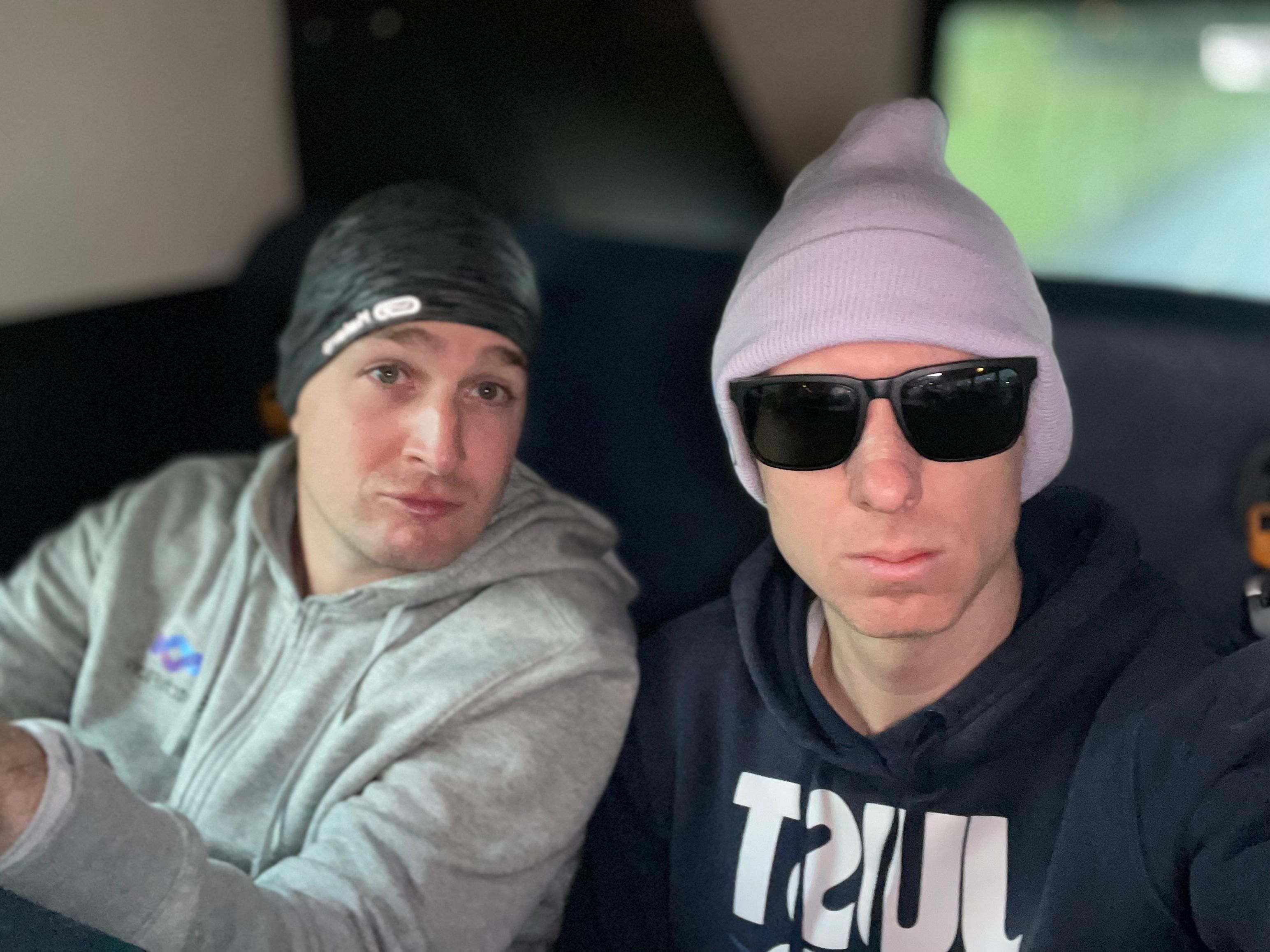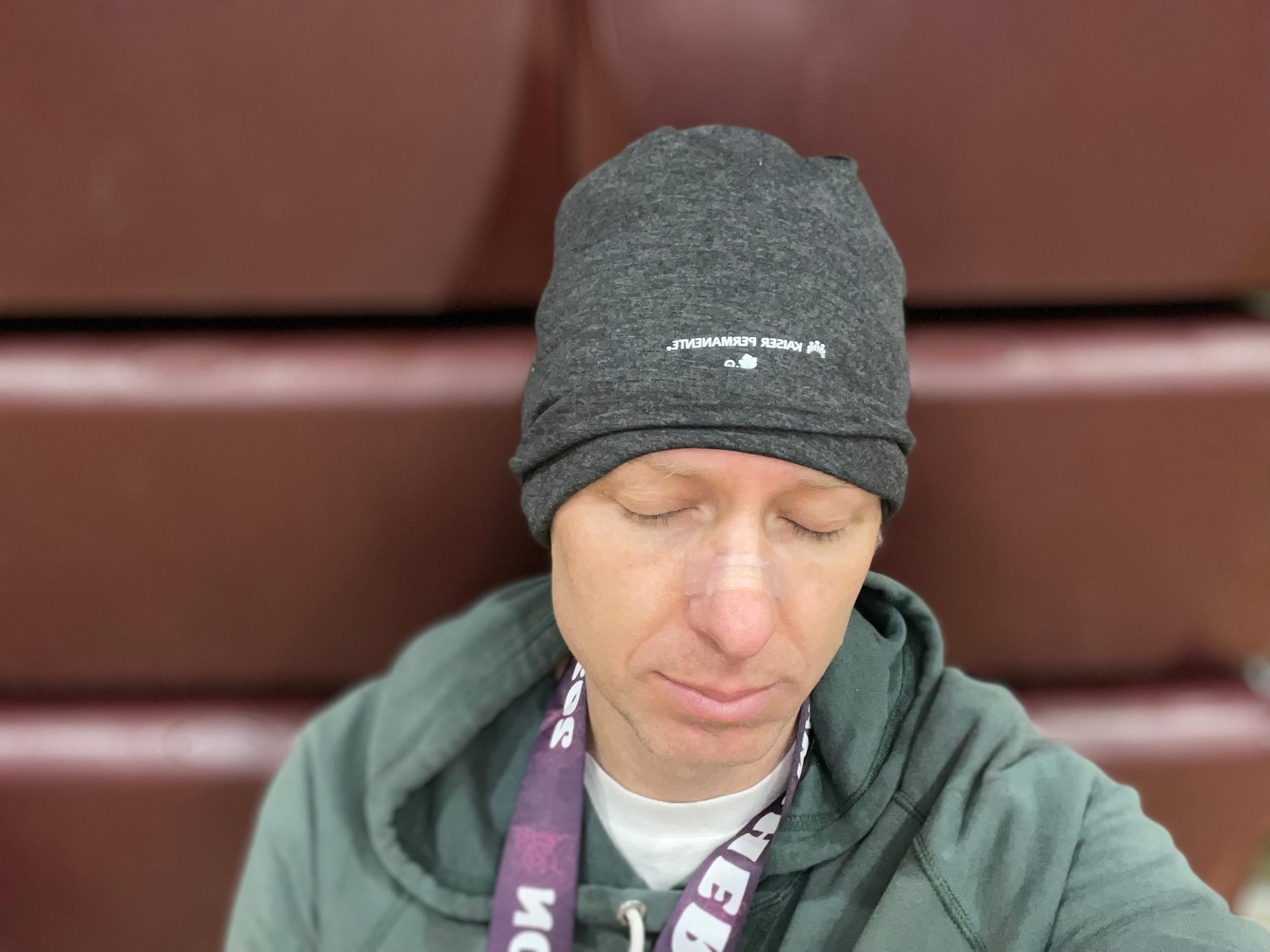Race Information
- What? Napa Marathon
- When? March 3rd, 2024
- Distance: 26.2 miles (42.195 km)
- Where? Napa, USA
- Website: Napa Marathon
- Strava Activity: Strava
- Finish Time: 3 hours 10 seconds
Goals
| Goal | Description | Completed? |
| A | Sub-3:00:00 | No |
| B | Sub-3:00:11 | Yes |
| C | Sub-3:10:00 | Yes |
Preamble
After completing the R2R2R, I took a break from running for a few weeks as I was traveling back to the UK for Christmas. During my stay, I scheduled a session with a UK physiotherapist (link) to address some minor pains I had been experiencing, primarily in my left knee and right hamstring. This appointment was incredibly beneficial, as the physiotherapist provided me with a variety of stretches and strength exercises. After spending a relaxing Christmas with minimal running, including a notable sub-20 minute 5k Parkrun just before the year’s end (my only sub-20 in 2023), I started a marathon training program targeting the Napa Marathon on March 3rd. This left me with approximately 8 weeks of training time, which is quite short, although I had a reasonable fitness base from all the ultra-running. Unsure of what time to aim for, but not afraid to set ambitious goals, I decided to target a sub-3 hour marathon, specifically a 2:59:59 finish. However, achieving this seemed relatively unlikely, especially since I had only just managed to complete a sub-20 minute 5k!
The Block
I have experimented with several different marathon training approaches:
- Long and Slow - This approach led to a 3:07 finish at the York Marathon.
- High-Intensity Speed Work with Minimal Base Building - This strategy resulted in a 2:50 finish at the Edinburgh Marathon, although it was followed by minor injuries.
- Improvising with Low Mileage - This approach resulted in a significant struggle after approximately 30 kilometers at the LA Marathon.
This time, I decided to follow a structured training plan. I visited “Final Surge” and browsed through their “10-week” Marathon training programs, selecting one that appealed to me based on my main criteria:
- An average of around 50 miles per week.
- Two speed sessions per week, including tempo runs and track repeats.
- Sufficient detail in each session’s description to allow for customization as needed.
I found an excellent plan (link) and, due to my slightly shorter timeline, adjusted it to an 8-week schedule. With that, I was ready to start, literally hitting the ground running!
In addition to running, I included a daily stretching routine and a significant amount of strength training, which I believe helps in preventing injuries.
I’m pleased to report that I completed approximately 90% of the planned sessions and generally felt quite good. Highlights of this training period included:
- Completing a 5KM Parkrun in 18:35 on a challenging course.
- Perfecting my technique with energy gels and salt capsules.
- “Not” running the SF Half Marathon! (was rained out, and ran it solo)
As the race day approached, I felt prepared, yet uncertain if a sub-3-hour finish was achievable. I contemplated aiming for a 3:10 finish to avoid the risk of blowing-up, versus taking a chance on achieving a sub-3-hour marathon.
Shoes
My last marathon was the LA Marathon in 2020, where I wore the original Vaporflys and was quite satisfied with their performance. Since then, I’ve logged about 300 miles in them, and they’ve started to lose some of their initial magic. Consequently, I acquired a pair of Vaporfly 3s. I tested them during the “not” SF Half Marathon, and while they felt decent, they seemed less cushioned than both the 4% and the VF1s. With the release of the AlphaFly 3s, I attempted to purchase a pair but found them impossible to obtain at retail price and couldn’t justify paying twice the amount on StockX. Thus, I stuck with the VF3s until, a week before the race, I stumbled upon a sale for the AlphaFly 2s in a running shop. I had read mixed reviews about the AF2s—specifically, concerns about their weight and high arch—but they were known for their bounce and ability to shield the foot from the road. Given that I have high arches, the arch issue didn’t concern me much, though I was slightly apprehensive about the weight.
After a few training runs, I indeed noticed the extra weight, but the energy return at marathon pace was impressive. I decided to embrace the risk and wear them on race day!
Let’s roll the dice!
On Friday morning, a friend from LA flew in to participate in his first marathon, aiming for a time around 3:30. After completing some errands and getting a good night’s sleep, we set off for Napa around noon on Saturday, hoping the wet weather would improve by race day! Once we had picked up our bibs and enjoyed some pre-race pasta, we headed to our hotel for a much-needed nap. Waking up at 3:30 a.m., we went through our morning routines before taking a bus to the race start in Calistoga, which is about a 35-minute ride back down to Napa. The race organizers had everything well-organized, making the event run smoothly. Upon arrival at the starting line, we found plenty of toilets, some water, and an efficient bag drop system. Kudos to the Race Director and their team. After a quick warm-up and the national anthem, we were on our way!

Coffee meets Bagel meets Hotel.

Lay flat!

Chilling on a warm bus before we start.
0 to 35kms
My initial strategy was to positive split the marathon with times of 1:28 for the first half and 1:34 for the second. However, after reviewing previous years runners on Strava it seemed even-splitting was more typical, I opted for an even pacing strategy, aligning roughly with the 3-hour pace group’s approach, a minor positive split. Joining this group turned out to be a wise decision. I settled in behind the other runners, allowing them to navigate the pace and block the wind. The pacers were amazing at managing the undulating course, guiding us through the race with their insights, going faster downhill and slower on the ups.
Race reports often mention Napa’s “rolling hills”, while partially accurate, I’d describe the course as predominantly downhill with several notable short climbs and a few longer, gradual ascents. The race starts with a gentle downhill, leading into manageable climbs. The pacing group ensured we maintained a steady effort, rewarding us with great descents after each summit. Unlike the virtually flat courses of London and Edinburgh, Napa rarely levels out, alternating between ascents and descents.
The aid stations were plentiful, staffed by volunteers who did a great job handing out water and cheering runners on. With a double-whammy of spectators followed by aid stations, giving you a big boost!
Approaching the 19km mark, I moved ahead of the sub-3-hour group for a quick restroom break, only to find them overtaking me, necessitating an extra push to catch up. This was a challenging moment in the race, and I felt a match was burnt.
After passing the halfway mark at 1:30:10, we pressed on for the next 16km (10 miles). Our group began to disperse as we maintained a steady pace and effort, entering the marathon’s most demanding phase. Despite the distance still ahead, I focused on visualizing the finish line and staying in sync with the pacing group, gradually ticking off the miles.
A Side Note: Strategy for Gels, Salt Capsules, and Nasal Strips
Given the lengthy interval since my last marathon (approximately 4 years), I decided it was time to reevaluate my gel and nutrition strategy. Previously, I had relied on a combination of two GU gels and two Hüma gels, which, although effective in providing energy, were challenging to consume due to their strong flavor and thick texture. I found myself needing to wash them down with water and then rinse my mouth to eliminate the aftertaste.
I had experimented with Maurten Gels before and appreciated their subtle flavor and jelly-like consistency, though I hadn’t experienced the same level of energy boost - hence never opting to use them on race day. Deciding to give them another try, I adjusted the dosage to address the perceived shortfall in energy. My tests during several long runs showed that beginning with half a caffeine pack every 3 to 4 kilometers, before switching to standard packs, worked a treat, keeping my energy levels high. Moreover, I didn’t feel the necessity to chase them with water or cleanse my palate, which was an added bonus and allowed for better timing.
Additionally, I experienced some cramping during the LA marathon, likely due to the combination of heat and hilly terrain, so I decided to incorporate salt capsules into my regimen. While it was difficult to discern their direct impact, they appeared to have no adverse effects, making them a worthwhile precaution.
As for nasal breathing, I’ve always found it challenging and wondered if nasal strips, designed to expand the nasal passages, might offer any benefit. The opinions on their effectiveness and any potential performance improvement were varied. However, my own trial during training suggested a noticeable improvement in my ability to breathe more easily. Encouraged by this anecdotal evidence, I included nasal strips in my training and race day kit.
35km until END
Note: The following details are approximate, as I don’t recall the exact distances or times:
As we reached the 35km mark, we had about 34 minutes left to cover the remaining 7+ kilometers. We were maintaining a pace of approximately 4:14 per kilometer, but I could feel my quads and hamstrings beginning to ache. After some quick mental calculations, I realized I could finish under 3 hours without keeping up this pace. I decided to gradually fall back from the sub-3-hour group, aiming to maintain a pace between 4:10 and 4:30 minutes per kilometer, planning to increase my speed in the final few hundred meters to ensure a finish inside 3 hours.
The final kilometers felt more challenging and windier without the shelter provided by the pace group. I managed to slowly catch up to and briefly draft behind another runner. As I passed him, we exchanged a fist bump and encouraged each other with a “WE GOT THIS.” He seemed to be struggling, and although I invited him to draft behind me, he couldn’t keep up for long.
Approaching the 41km point, I began to pick up the pace closer to 4 minutes per kilometer, making a few turns. In the final seconds, I pushed myself to under 3:30 per kilometer, giving it my all. As I rounded the last corner and saw the finish line, I glanced at my watch and, with one last effort, crossed the finish line.
Unfortunately, I had miscalculated slightly, finishing in 3 hours and 10 seconds. Oops.
Wrap & What’s next?
While I’m very pleased with my time, marking my second-fastest marathon, I’m aware that I could have easily shaved off those final 10 seconds had I increased my pace a bit sooner. It’s a lesson learned for next time—I’ll aim to give myself a bit more of a buffer.
The post-race setup was excellent—I received a complimentary beanie, retrieved my drop bag containing warm clothes and a towel since I was feeling cold. Then, I made my way to the finish area and enjoyed a non-alcoholic beer while watching my friend achieve an impressive first marathon time of around 3:27 before we headed back down to Silicon Valley.
Overall, this was one of the most enjoyable marathons I’ve participated in! No sub-3 this time, so it looks like I’ll be seeing you at the California International Marathon (CIM)! However, before that, I will first be participating in the Arkansas Traveler 100 in October!
P.S. A huge thank you to the sub-3 pacers; you all did an incredible job!

Before the pain.

Tired finish.